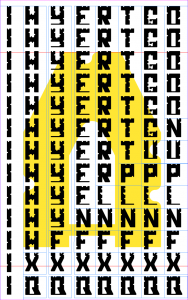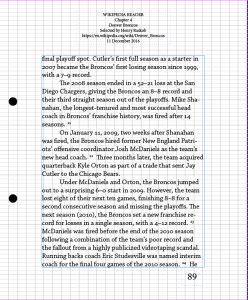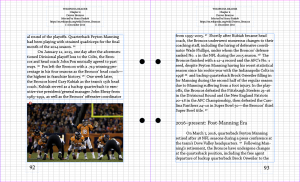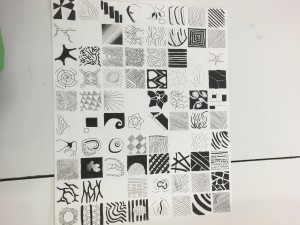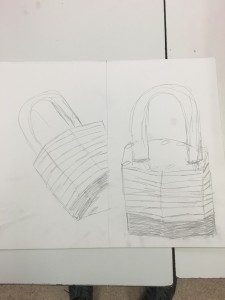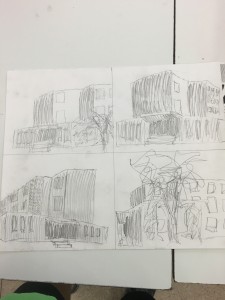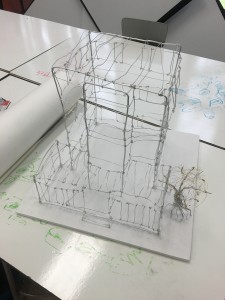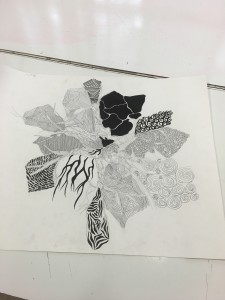Sonny’s Addiction
In his short story Sonny’s Blues, James Baldwin writes the story of a young man at the bottom of society and how he chooses to cope. The man struggles to understand whether he produces his society or if his society produces him. The world that Sonny grows up in was one that, for the most part, wants nothing to do with him. This neglect he feels from society and his family, coupled with the shame he feels for the life he wants to live, inevitably leads him to addiction. This is Sonny’s answer to escape reality and pursue his dreams. Addiction can come from many places but in Sonny’s case, he was driven to it by society in his search for escape.
Sonny’s Blues is a complex story of addiction narrated by Sonny’s unnamed brother. This is important because although Sonny is an addict, the true message of the story is not the outer facade, which in this case is addiction, but the inner person that only someone who loves Sonny could see. In the beginning of the story it is not entirely clear who Sonny is. His brother speaks about him with much anxiety, as if he feels at fault for Sonny’s behavior. Baldwin writes, “I felt my guts were going to come spilling out or that I was going to choke or scream. This would always be at a moment when I was remembering some specific thing Sonny had once said or done”(2149). This is a remarkably accurate description of the guilt felt when a loved one is an addict. What he does not reference is the fact that addiction is a disease that can take control of someone’s actions. The narrator blames himself for his brother’s downfall but it is not entirely his fault just like it is not entirely Sonny’s fault. Because the brother is narrating this story, the whole scope of who Sonny is can be seen rather than just the outer layer of addiction.
Sonny has many exterior influences that dictate his fall, and one of these is institutional racism. During this time in history, young black males were swept away and discarded by society. Baldwin himself left the United Sates for Paris in order to work. The social climate of America during the 1950s was not indicative for him to pursue his work thoroughly and completely as shown in the documentary about him, The Price of the Ticket. Much like Baldwin, who needed to escape from the United States to be free enough to peruse his writing, Sonny is escaping his own circumstances in order to pursue his love for Jazz. The social problems that lead to Sonny’s addiction are insurmountable and thus he needs a means of coping. Because he was a black man Sonny also had a narrow selection of opportunity to make money. This then leads to crime, which in turn leads to interaction with more criminals and more contact with drugs, continuing the inescapable cycle of addiction. The National Institute of Health states, “chronic drug abuse causes long-lasting brain changes that contribute to an addicted person’s compulsion to seek and use drugs despite catastrophic consequences” (NIH) thus contributing to the viscous cycle of drug and crime.
Not only is Sonny and many of the other young black men during the early 1900s rejected from the streets, but also they are unwanted in their schools. Baldwin writes about the boys congregating in a schoolyard saying “a teacher passed through them every now and again, quickly, as though he or she couldn’t wait to get out of that courtyard, to get those boys out of their sight and off their minds”(2195). The ones who are trusted to educate and make sure that these children are capable of participating in the social contract are completely indifferent towards these boys, almost wishing they were not there. Sonny who was in the same situation as these boys knew that he had no passion for school, just as the teachers have no passion to teach and in order to pursue his own passions, he decides to leave.
Sonny’s dream is a to become a Jazz musician. His brother admittedly disapproves of this dream, saying, “I somehow had the feeling that being a drummer might be all right for other people but not for my brother Sonny” (2203). Sonny knows his brother does not approve and he feels shame because of it. When we finally meet Sonny in the story, he is friendly and polite, and does not fit the general stereotype of an “addict.” When Sonny first comes home “everything went fine, the oldest boy remembered him, and the youngest boy liked him, and Sonny had remembered to bring something for each of them ”(2200) and it seems that he is still the old likeable Sonny who loves his family. The previous times the brothers met they discussed their lives and Sonny divulges his dream. He reveals, “I’m going to be a musician” (2203) with relief, as if he has wanted to get it off his chest for a long time. This is a defining moment in the brother’s relationship; Sonny is finally being straightforward with his brother. He tells him his true desires, hurdling over his fear of rejection, which is a major reason why he originally turned to drugs. Sonny says “I want to play with—jazz musicians.’ He stopped. ‘I want to play jazz” (2204), and he is finally admitting his dreams to not only his brother, but also himself. Although at first, his instinct is to hide himself, he reluctantly lets his brother in and exposes his true intention of following his dreams of becoming a Jazz pianist.
The act of using heroin is a source of shame, and it creates a cycle of coping with that shame only by using more heroin. Baldwin wrote about Sonny’s start in drugs when a character from Sonny’s past emerges: a friend of Sonny’s from school. He says, “I never give Sonny nothing,” (2197) revealing that he has not given Sonny any drugs, but he knows that he is guilty for Sonny’s downfall. He emphasizes the fact that he has not given Sonny any drugs to absolve himself of any fault in the matter. “The boy said finally, . . . a long time ago I come to school high and Sonny asked me how it felt. I told him it felt great . . . It did” (2197). Sonny is fatigued by his life, and he knows his purpose in life but he needs to escape to pursue it. Here, he is presented with a very attainable escape. A study conducted by Informa on heroin addiction states “initiation into heroin use had had a profound effect on these networks, fragmenting groups between those who initiated and continued to use” (409). Heroin addicts are greatly influenced by their peer group. The bond with the drugs gets stronger, and the connection with family gets weaker. Because Sonny is involved in a group of people who continually do heroin, he falls into the cycle, and this deteriorates his family bond, and thus creates more shame. His dream of becoming a jazz musician would have been nearly unattainable in his current life, so he escapes into the world of musicians using heroin to inspire or even to cope. The cycle is then perpetuated by the shame he feels, creating another cycle of addiction.
Sonny’s family, although not intentionally or willingly, creates an unhealthy environment where Sonny is not given the proper resources to be a functioning human. He needs an alternative, and so he moves to drugs. Sonny’s family contributes to a lot of pain, but there are also nuances of care and love. It is almost as though because Sonny’s father loves Sonny so much that he almost hates him for anything he does wrong. His brother explains, “He and Sonny hadn’t ever got on too well. And this was partly because Sonny was the apple of his father’s eye” (2201). This can be a lot of pressure for Sonny: to handle having someone so violently invested in him that it begins to choke him. On top of that, Sonny’s father “died suddenly, during a drunken weekend in the middle of the war, when Sonny was fifteen”, this is the start of Sonny’s family leaving him for periods of time, which creates an environment that is unbearable (2201).
Sonny’s brother was seven years older than he, and this begins to create more alienation. Given such a large age gap, they never have overlapping interests. Sonny’s mother knows how troubled Sonny is and makes his brother promise to take care of Sonny once she is gone. Although Sonny’s brother does love Sonny dearly he “pretty well forgot . . .[his] . . . promise to Mama” (2203) until he remembers at his mother’s funeral. Unfortunately, at that time he was being sent away with the army, creating another instance where his immediate family could not be there for Sonny.
Because Sonny’s brother is serving in the military he arranges Sonny to live with his fiancé. This is another difficult chapter in Sonny’s life. During this time, Sonny is supposed to be attending school, which he does not do. Instead, Sonny spends most of his time with the musicians in Greenwich Village. This information scares his mother in-law and “she started to scream at him and what came up, once she began . . . was what sacrifices they were making to give Sonny a decent home and how little he appreciated it” (2207). Hearing this devastates Sonny and he is forced to leave the home with his’ brother’s family. This raises a question for Sonny: what is a young man to do when his parents are dead and his brother is gone with the military? It is extremely conceivable that this young man would turn to something extremely accessible in order to forget about his pain.
Sonny fits many of the characteristics of someone especially susceptible to addiction. European Psychiatry Medical Journal states that the profile of someone who is predisposed to addiction is “an unemployed male, without a higher education, with a chronic ethanol consumer father, and with certain personality trades like the need to be liked and accepted, sensitivity to . . . rejection . . . [and] anxiety” (1065). Many of these pressures are due to his family relationship. He is anxious about telling his brother about his music because he is afraid of rejection, his father dies due to alcohol, he does not finish high school and he is faced with loneliness and loss. When dealing with all these emotions and circumstances, it is very difficult to cope with no one to help.
The life of an addict is not an easy one. Many times their stories are too easily judged. Sonny is a loving, talented man, who was left to deal with his extensive problems alone. Sonny’s story is one of a vicious cycle of abuse and neglect, resulting in more abuse and neglect. The society he is born into systematically pushes him down through institutionalized racism in the form of abusive schools and crime-ridden neighborhoods. His family puts enormous amounts of stress on him, starting with his constricting father and finally his entire family essentially abandons him for periods of his life. On top of it all, Sonny is ultimately ashamed of the life he is living as well as the life he wanted to live. With so many negative factors affecting this young man, it is easy to see why someone would turn to a life of drugs. This begs the question: is it the heroin addict’s fault for the addiction, or is it the society that drives him to it? While there is no definite answer, in Sonny’s case it is society and the environment he was brought into that caused his addiction.
Annotations
- “Trapped in the darkness which roared outside.”- Baldwin refers to the subway he is riding almost as a dark prison, perhaps alluding to the fact that city life can be very confined.
- “A great block of ice got settled in my belly and kept melting there slowly all day . . . It was a special kind of ice . . . sending trickles of ice water all up and down my veins”- this is a very interesting way to describe how an emotion can constantly eat away at you using your own bodily functions to hurt you
- “I felt my guts were going to come spilling out or that I was going to choke or scream. This would always be at a moment when I was remembering some specific thing Sonny had once said or done.”- This sentence evokes a lot of worry it resembles the description of the feelings toward a bully.
- “I didn’t want to believe that I’d ever see my brother going down”- Sonny’s Brother neglected Sonny, maybe if they were to be more close sonny wouldn’t be in such a bad way
- “Horse”- a slang word for heroin.
- “A teacher passed through them every now and again, quickly, as though he or she couldn’t wait to get out of that courtyard, to get those boys out of their sight and off their minds.” – Baldwin sums up a lot of the sentiment of society towards these boys. No one wants to care for them or engage with them they just want to do their job and be done with them. This could be a large reason why so many black young men turned to life of crime or even heroin.
- “Looking just like sonny”- Baldwin is constantly comparing sonny to the other boys at the school, perhaps commenting on not just one case of a young black boy that society walked on but all young black men and women who are thrown to the side.
- “’but a long time ago I come to school high and Sonny asked me how it felt.’ He paused, I couldn’t bear to watch him, I watched the barmaid, and I listened to the music which seemed to be causing the pavement to shake. ‘I told him it felt great.’ The music stopped, the barmaid paused and watched the juke box until the music began again. ‘It did.’”- sonny’s brother is continually repressing the memories of the past, not bearing to address the problems of his brother.
- “Then I kept in constant touch with him and I sent him whatever I could and I went to meet him when he came back to New York.”- It took sonny to write a letter for them to meet back up and in a certain way an apology
- “I was remembering, and it made it hard to catch my breath, that I had been there when he was born; and I had heard the first words he had ever spoken. When he started to walk, he walked from our mother straight to me.”- Baldwin conveys the emotions of their meeting using nostalgia and the innocent times long gone
- “And thank God she was there, for I was filled with that icy dread again.”- The narrators wife is the ice breaker at the first meal, because she wasn’t there for their whole lives she didn’t encounter all of the worst of Sonny’s life making it so she can be more open.
- “He and Sonny hadn’t ever got on too well. And this was partly because Sonny was the apple of his father’s eye.” Its interesting that someone could love someone so much and want the best for them that they almost hate them when they mess up.
- “”I want to talk to you about your brother,” she said, suddenly. “If anything happens to me he ain’t going to have nobody to look out for him.”- the whole family knew Sonny was troubled and the narrator’s mother even warned him but he still left.
- “I’m going to be a musician”- This is a bug distinction between Sonny and his brother. Sonny wants to be a musician: free and creative where his brother is an algebra teacher.
- ‘“I want to play with—jazz musicians.’ He stopped. ‘I want to play jazz,’ he said.’”- Here Sonny shows his true desire he doesn’t just want to play jazz he wants to be a part of it and create it. he was ashamed so he stuttered but he’s done hiding.
- “The idea of searching Sonny’s room made me still”- The narrator is terrified of finding something in Sonny’s things and would be ashamed if he didn’t.
- “The seven years’ difference in our ages lay between us like a chasm” -Sonny’s brother was so much older than he, they didn’t really have anything in common, resulting in another family member sonny could not turn to.
- “I pretty well forgot my promise to Mama”- the promise the narrator made to help sonny was lost contributing to a long story of neglect.
- “she started to scream at him and what came up, once she began—though she denies it to this day—was what sacrifices they were making to give Sonny a decent home and how little he appreciated it”- this is a turning point in Sonny’s life, this is when he completely leaves home to live on his own for a while.
- “I somehow had the feeling that being a drummer might be all right for other people but not for my brother Sonny”- Sonny’s brother admits disapproval for his brothers chosen path
- “Everything went fine, the oldest boy remembered him, and the youngest boy liked him, and Sonny had remembered to bring something for each of them”- Sonny’s brother is relieved and almost suspired at how good his brother is after all he’s been through.
- James Baldwin: The Price of the Ticket. Films On Demand. Films Media Group, 1990. Web. 20 April. 2016.
- In Abstracts of the 23rd European Congress of Psychiatry, European Psychiatry28-31 March 2015 30 Supplement 1:1065
- Best, David. AddictionResearch & Theory, Vol 15(4), Print. Aug, 2007. pp. 397-410.
- US Department of Health and Human Services. National Institute of health, march 29 2013. Web. 20 Apr. 2016.
